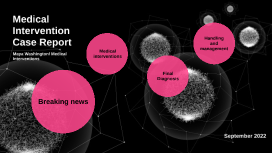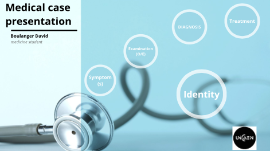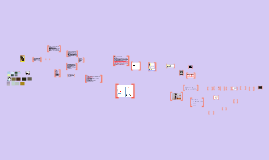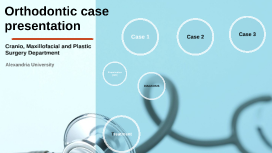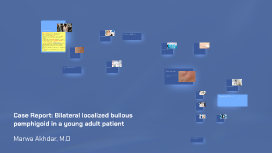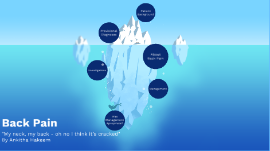Medical Case Presentation
Transcript: O God, that men should put an enemy in their mouths to steal away their brains! That we should with joy, pleasance, revel, and applause transform ourselves into beasts! William Shakespeare (1564-1616) British poet and playwright. 48 year old Caucasian female "My stomach is really hurting" HPI 48 y/o lady with a PMH of alcoholic liver cirrhosis, and esophageal varices "My stomach really hurts" She's been having abdominal pain for the past 6 days. Describes the pain as dull (constant and diffuse) 8/10 in severity starting from the epigastrium moving to the lower part of the belly. She feels relief when she lies down and worse sitting up. She also mentions that she noticed gradual distention of her belly for the past three weeks. She denies any nausea, vomiting, weight loss, or fever but notices some swelling in her left leg. In addition, she has recently been experiening some shortness of breath. She has dyspnea on exertion but denies orthopnea and paroxysmal nocturnal dyspnea. Of note, she mentions that she had similar belly pain 2 weeks ago which was associated with episodes of bloody vomiting. She went to Eastern Shore Hospital, admitted for upper GI bleed, underwent a panel of tests that included an endoscopy, ultrasound, and ascitic tapping and diagnosed with liver dx. She also mentions that she felt a lot better after that and hoped to get tapping done at SAH. Past Medical History Alcoholic liver cirrhosis Grade one esophageal varices Anemia Hx of thrombocytopenia Anxiety disorder GERD Cholecystitis Alcohol abuse Past Surgical History Rhinoplasty Allergies Acetaminophen (rash) Oxycodone (nausea) Medications Propanolol 10 mg po BID Pantoprazole 40 mg po BID Lactulose 15 mg po Qday Spironolactone 25 mg po Qday Sertraline 100 mg po Qday Clonazepam 1 mg po BID Review of Systems General: Muscle weakness, fatigue, and chills HEENT: No headaches, vision change, hearing changes, sinus troubles, bleeding gums, swollen glands Cardiac: No chest pain, palpitations Resp: Cough (non productive) and wheezing Breasts: No lumps, pain, nipple discharge GI: per HPI GU: No trouble urinating, no pain on urination, no hematuria, LMP was three years ago Extremities: per HPI Skin: No rashes, lesions, or color changes Endocrine: No heat or cold intolerance, excessive thirst or hunger Neuro: No seizures, numbness, or tingling Hematologic: No easy bruising or past transfusions Physical Exam 99.0 T 76 P 18 RR 115/60 BP 97% on 2L nasal cannula Weight: 70.307 kg General: Middle aged lady, in obvious pain but no acute respiratory distress, alert and oriented to person, place, and time. HEENT: Scalp normal, pupils equally round and reactive to light and accomodation. Fundoscopic exam reveals normal vessels, tympanic membranes are normal, oral pharynx is normal, neck is supple, no abnormal adenopathy in cervical or supraclavicular areas, thyroid is normal without any masses. Cardio: No murmurs/rubs, heart sounds S1 and S2 are present. Resp: Decreased air entry over the rt lower lung field, some expiratory wheezing bilaterally. GI: The abdomen is distended and bulging at the flanks but not tense, diffuse tenderness to palpation exquisitely over the epigastrium, Murphy's sign not present, bowel sounds are present, positive for shifting dullness, liver palpable 2 fingers below the subcostal margin, unable to appreciate exact size of liver or any splenomegaly MS: No cyanosis, clubbing, or edema noted. Peripheal pulses in the dorsalis pedis, and radial arms are normal. Skin: Multiple spider angiomas over subclavicular region, face and shoulders Neuro: Alert, oriented x3, CN II-XII intact, power 5/5 all extremities. March 10: Hypoxic requiring 100%FIO2 and PEEP of 12. March 11: Breathing improving requiring PEEP of 5 and FiO2 of 40%. Renal function improving with the CVVHD March 12: Breathing treatment the same, worsening encephalopathy, sedated but arousable, does not follow commands this am, eye opening present. CT of abdmn showed mild ascites, possible ascending colitis. Displaying multiorgan failure. March 13: Family decides to change code to DNI/DNR and request pt to be extubated with pastoral services present. March 14: Pt displays agonal breathing, no longer arousable. On morphine drip for pain. March 15: Worsening agonal breathing, no longer arousable. On morphine drip for pain. March 16: Pt passes away at 6:21pm. SBP Spontaneous bacterial peritonitis (SBP) is an acute bacterial infection in the peritoneum and severe consequence of ascites. Patients with cirrhosis who are in a decompensated state are at the highest risk of developing spontaneous bacterial peritonitis. Patients at greatest risk for spontaneous bacterial peritonitis have decreased hepatic synthetic function with associated low total protein level or prolonged prothrombin time (PT). The diagnosis is established by a positive ascitic fluid bacterial culture and an elevated ascitic fluid PMN count >250 cells/mm3 SBP Fever and chills occur in as many as 80% of patients.






